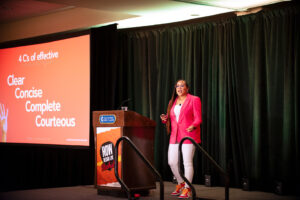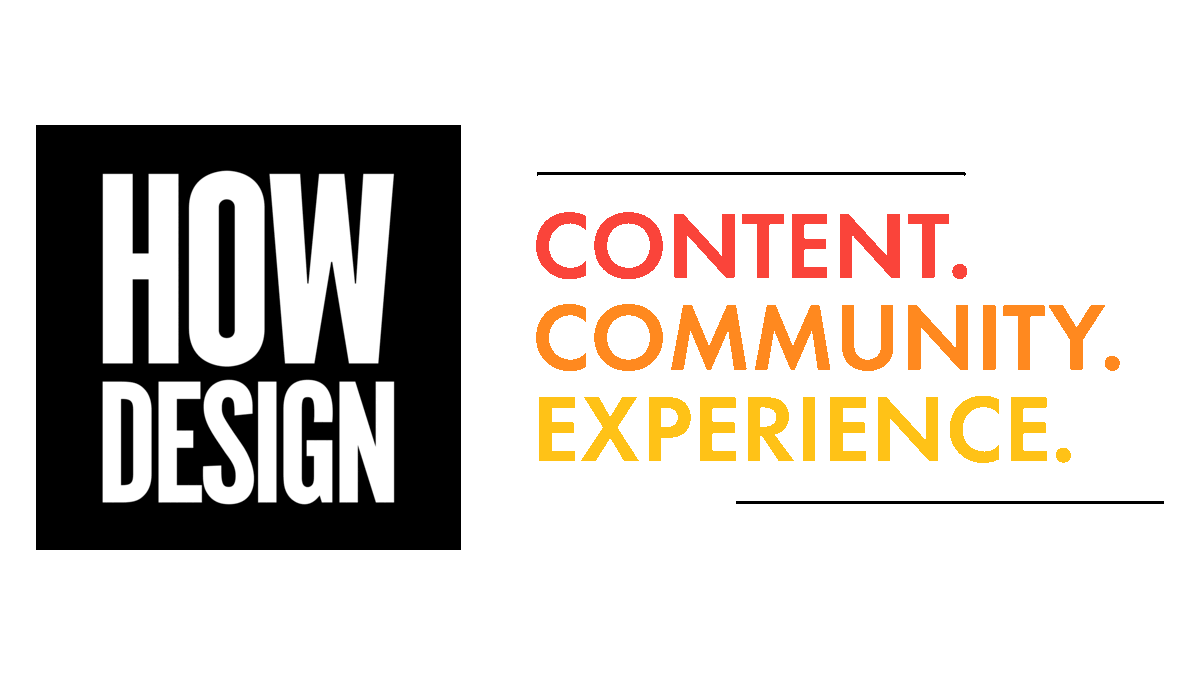 Ever feel like you’re not on the same page … or even the same book as the other departments you work with?
Ever feel like you’re not on the same page … or even the same book as the other departments you work with?
Maybe you’re a designer working with the marketing team. Maybe you’re an executive working with an art director. Maybe you’re a solo designer working with a new client.
Not every team speaks the same language—so it’s essential to find common working ground to get your project done (and done well). In her 2023 HOW Design Live session “Get on the Same Page,” CSG Product Marketing Director Sara Morgan offered a set of six hacks designed to do just that, regardless of one’s position. Here are a few highlights.
- Show the whole picture.
Morgan said research shows that 94% of stakeholders think they’re providing enough clarity on the projects they’re handing off—but one in four creatives feel the communications are jumbled.
What’s the disconnect? To start, Morgan pointed to the iceberg analogy—we see the 5% poking out from the sea, but not the 95% that underpins it. In other words, when someone hands a project off, they make assumptions about what the other party needs to know—and what they don’t—often leaving out critical details in the process.
“So regardless of what side you’re on, start thinking about zooming out,” Morgan said. “That whole picture is really about getting to the root of what the ask is.”
Don’t take knowledge for granted—when in doubt, overexplain. It will drive results.
- Communicate collaboratively.
Morgan said people often just throw tasks over a veritable wall without thinking of the actual people on the other end of it. And, well, we need to start thinking about those people because each one has a different communication style. Consider your recipient. Know and understand their personality and how to work with them to produce successful outcomes.
Moreover: “You also have to do a little bit of self-reflection: ‘What’s my communication style? How am I maybe hindering this process and not flexing to one of these other communication styles?’”
- Give specific feedback.
Feedback can sometimes feel personal because of how it is framed, but it shouldn’t ever be that way. Morgan said to be aware of your language and how you’re articulating your feedback, and always make it about the work itself—in detail rather than broad strokes.
For instance, rather than simply saying a project outcome is bad, dig into specifics about it: what works, what doesn’t, and why. Morgan offers written feedback first and then talks through it with her colleague—allowing for opportunities to share insights, such as the fact that a certain tweak may be necessary simply because a manager is picky about the element in question.
- Respect expertise.
Here, Morgan drew the analogy of traveling abroad: She always makes sure to learn some of the language ahead of time to respect the culture she’s visiting. By making an effort and acknowledging that you’re a visitor in someone else’s country, you get respect back.
Take that to the office. Rather than coming in and bulldozing a team and a project, arrive fully briefed and up to speed, and take the time to learn the lingo of the team you’re collaborating with.
“It goes such a long way,” she said. “And it shows respect for their expertise.”
- Be transparent.
Let’s go back to that notion of flinging things over the wall. In doing so, we again often forget to include critical context that the other side should really know. So build as much transparency into your process as possible. If the president of the company hates yellow, don’t just tell the creative team “no yellow”—tell them the reason for it.
“That’s where building that collaborative communication, respecting expertise and being able to have those conversations—[with] context—can be everything in a situation.”
- Give the gift of time (when you can).
Morgan said one of the biggest areas of creative friction is this: not giving the other party enough time to execute on a task. She said it often originates at the stakeholder level—when things get held up and are eventually thrown over that wall, they arrive at the feet of the creative team with an insane deadline. Her best advice? Get ahead of the conversation. Pick up the phone and let the team know that a big project is coming down the pike and may land fast and unexpectedly.
In other words: Help make it a little more expected.
For much more, tune into the full session right here!
For more on Sara Morgan click here.
